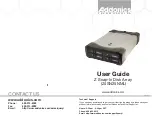
Because assigning data to particular media may be an ongoing and complex activity, Smart Tiers
software automatically manages the process based on user-defined policies.
As an example of the additional implementation of tiered storage, tier 1 data (such as mission-critical
or recently accessed data) might be stored on expensive and high-quality media such as
double-parity RAIDs (redundant arrays of independent disks). Tier 2 data (such as financial or
seldom-used data) might be stored on less expensive storage media.
Tier monitoring and data relocation
Smart Tiers uses tiers to manage data storage. It classifies the specified drives in the pool into tiers
(storage hierarchy). Up to three tiers can be defined in a pool depending on the processing capacity
of the data drives. Tiering allocates more frequently accessed data to the upper tier and less
frequently accessed data, stored for a long period of time, to the lower tier.
Smart Pool
With Smart Tiers, you can enable the Smart Pool option for an existing pool. The default is to allow
tier relocation for each THP V-VOL. Only the THP V-VOLs for which tier relocation is enabled are
subject to calculation of the tier range value, and tier relocation will be performed on them. If tier
relocation is disabled for all THP V-VOLs in a pool, tier relocation is not performed.
Figure 6 Relationship between Smart Pool and tier relocation
Example of adding a tier
If the added pool-VOLs is a different media type, then a new tier is created in the pool. The tier is
added to the appropriate position according to its performance. The following figure illustrates
adding a tier.
Example of deleting a tier
If a tier no longer has any pool-VOLs when you delete them, the tier is deleted from the pool. The
following figure illustrates deleting a tier.
Smart Tiers
77
















































